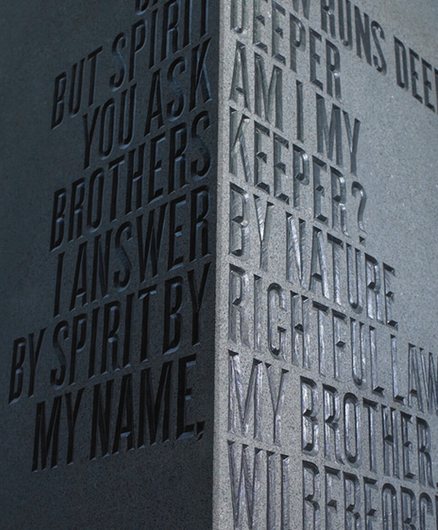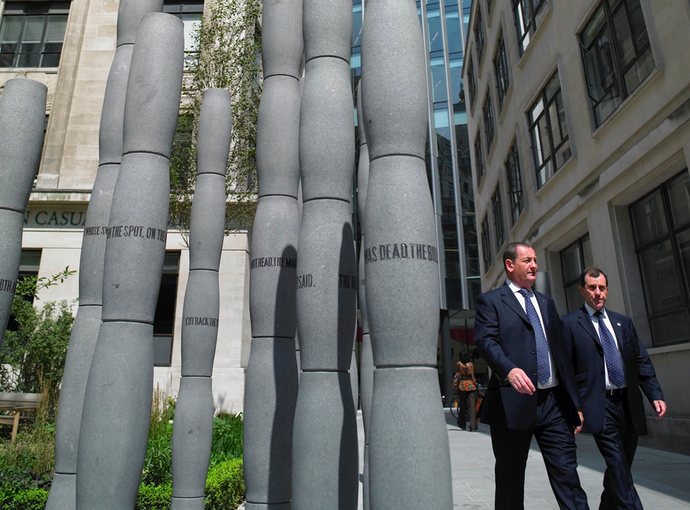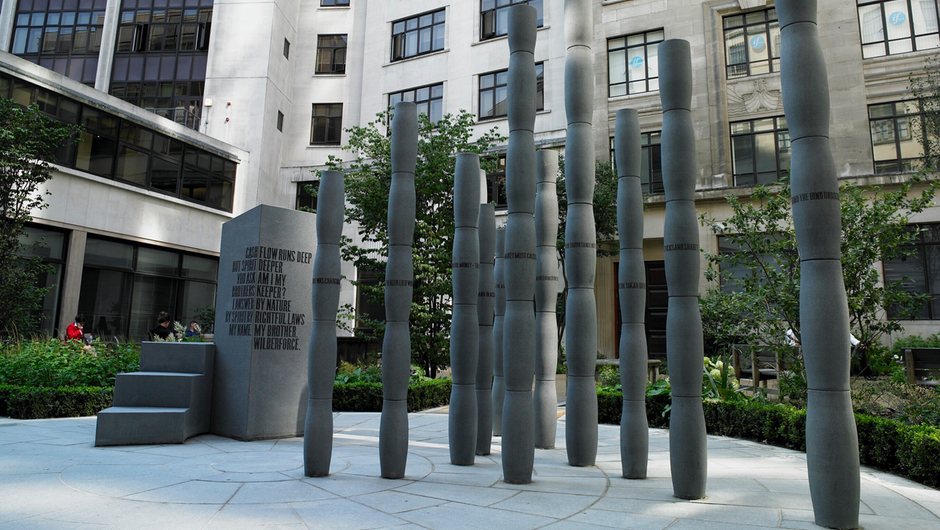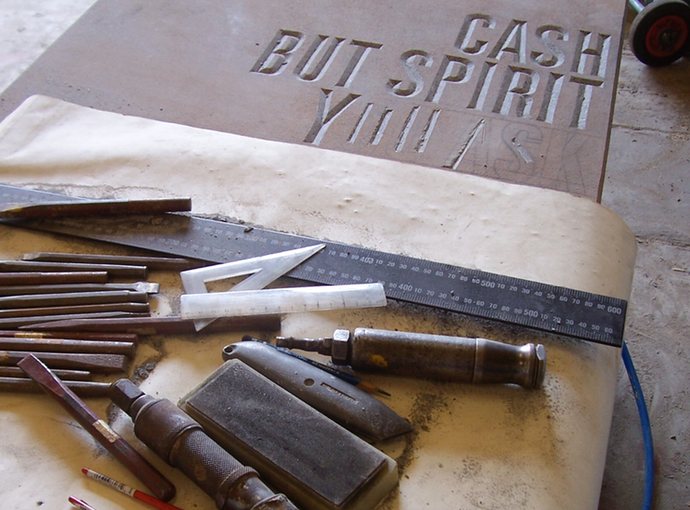



As part of their evolving relationship with the City of London to develop an innovative and original approach to public art in the square mile, Futurecity were appointed by the City to curate a permanent sculpture to commemorate the 2007 bicentenary of the abolition of the transatlantic slave trade. The resulting work, ‘Gilt of Cain’, is a unique collaborative combination of art, poetry, architecture, design and public space.
The artwork is sited at Fen Court, a walk-through courtyard between Fenchurch Avenue and Fenchurch Street. This site is significant because of its proximity to St Mary Woolnoth Church – where anti-slavery campaigner William Wilberforce was inspired by the Rev John Newton’s powerful anti-slavery sermons.
Visocchi’s sculpture comprises 17 carved granite columns, based upon the form of growing sugarcane and grouped around a granite viewing podium. The grouping of the columns and podium is suggestive of a group of people gathered to listen to a speaker – perhaps the Rev Newton preaching against slavery, perhaps a trader auctioning his slaves, perhaps William Wilberforce campaigning in front of an audience.
Sissay’s poem, the Gilt of Cain, was written in response to Visocchi’s sculptural ideas and skillfully weaves the coded language of the stock exchange floor with references to the story of Cain and Abel in the Old Testament, and to Wilberforce’s campaign. Fragments of the poem are engraved onto each column in typography used in early abolitionist literature printed near the site. The full poem is engraved on a plaque.
Futurecity brought in Hat-trick Design to work on the graphics and the result is a typeset that was used in anti-slavery literature distributed around the Fen Court in the early 19th century.

